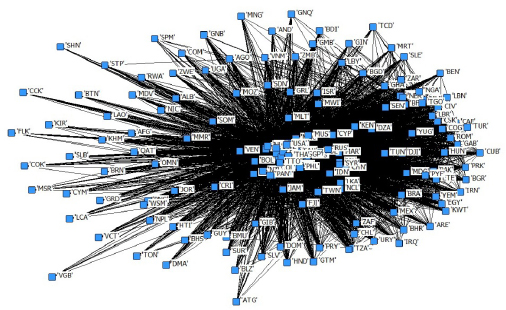Introduction
This book is an overview of six years of joint research conducted within the Department of Applied Economics of ENSTA ParisTech. It introduces new tools for the analysis of economic exchange structures.
The first theme covered is that of the globalization of trade in industrial goods. In 2010, we published an article in the European Journal of Economic and Social Systems which introduced an original method to historically identify this phenomenon from international trade data for the period 1980–2004 [LEB 10]. These same tools were also used to quantify the scale of the phenomenon, identify contributing countries, in terms of industrial goods, whose exchange structure changed with time. In this method, trade in goods is represented in the form of graphs in which the nodes / poles correspond to countries and the links between these nodes to (physical or financial) flows that interconnect these countries. These flows can be divided according to the goods that are traded. Information on the direction of flow (who exports and who imports) and on their intensity (what amounts) is integrated in the graph. In the end, the structure of international trade, on a given date, looks like the graph in Figure I.1.

Figure I.1. Structure of international trade in industrial goods in 1980 (CEPII data, TradeProd database)
The graph is drawn such that the most “important” economies ...
Get International Specialization Dynamics now with the O’Reilly learning platform.
O’Reilly members experience books, live events, courses curated by job role, and more from O’Reilly and nearly 200 top publishers.

